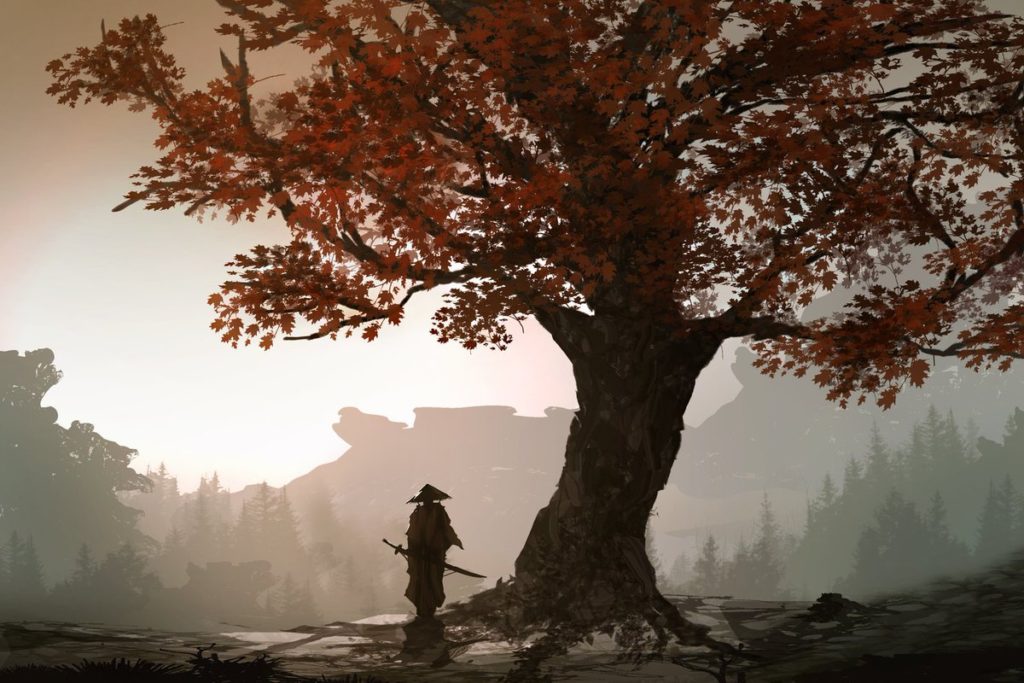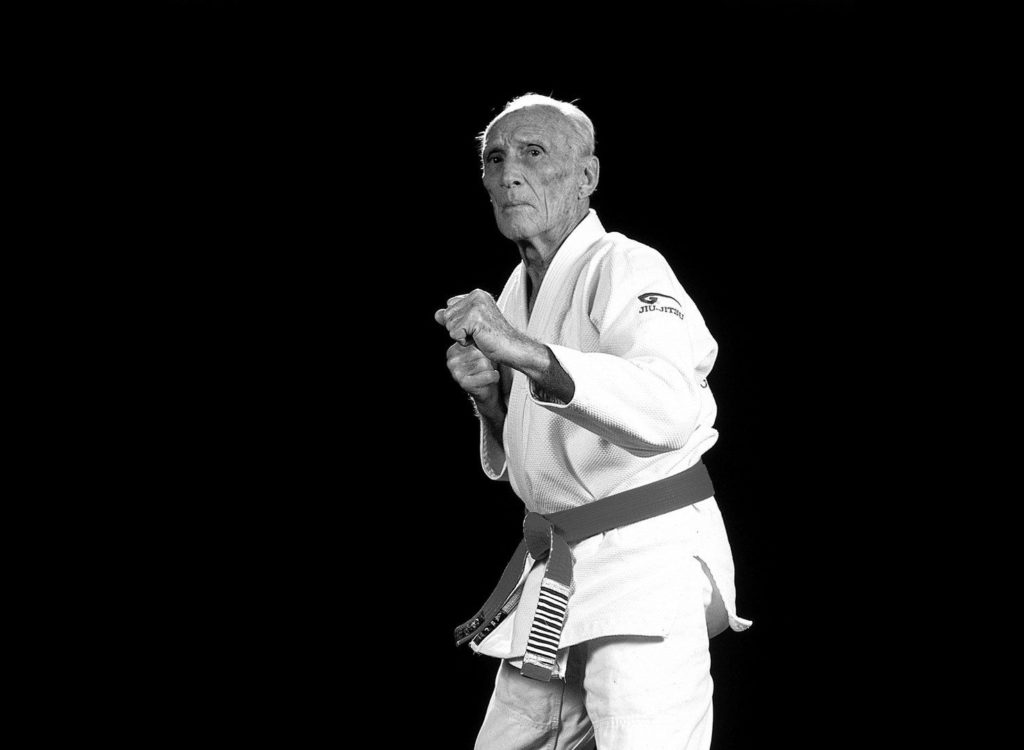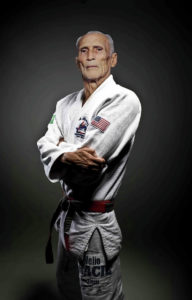History of Jiu Jitsu
The period of Japanese history between the 8th and 16th centuries was covered with constant civil war and many systems of Jiu-Jitsu were utilized, practiced and perfected on the battlefield. This training was used to conquer armored and armed opponents.
It was originally an art designed for warfare, but after the abolition of the Feudal system in Japan, certain modifications needed to be made to the art in order to make it suitable for practice. During Feudal times, Jiu-Jitsu was also known as Yawara, Hakuda, Kogusoko, and an assortment of other names.
The earliest recorded use of the word “Jiu-Jitsu” happens in 1532 and is coined by Hisamori Tenenuchi when he officially established the first school of Jiu-Jitsu in Japan. The history of the art during this time is uncertain because teachers kept everything secret.
In approximately 1603, Japan came to a fairly peaceful period following the formation of the Tokugawa military government by Tokugawa Ieyasu. During this time (1603-1868), the feudal civil wars that had plagued Japan for centuries started to disappear. However, following the adage “living in peace, but remembering war,” the traditions of classical budo (martial arts) required that everyone should learn a method of self-defense for those situations where weapons could not be used and the practice of Jiu-Jitsu continued to spread. Forms and techniques displaying weapons skills of fighting began to yield to weaponless styles which incorporated many of the grappling ground fighting techniques of the older styles.
After the Feudal period in Japan ended, a way to practice the art and compete with safer rules was needed, which is why Jigoro Kano (1860-1938), an educated man and member of the Cultural department and a practitioner of Jiu-Jitsu, developed his own version of Jiu-Jitsu in the late 1800s, called Judo. Jigoro Kano devised a new system for physical culture and moral training as well as for winning contests.




THE GRACIE CONNECTION
When the days of the Samurai came to an end, the gun replaced the sword, and new sportive ways to practice martial arts were developed. Eventually, in Japan many different variations of Jiu-Jitsu (also spelled Jujitsu) took shape, including Aikido, Judo and many other Japanese martial arts. But these arts were missing essential pieces of what the complete art of Jiu-Jitsu originally held.
This lack of reality created years of confusion in the martial arts community, a confusion that legendary Bruce Lee would later refer to as the ‘classical mess’. Bruce Lee was actually a student of Judo and did many studies on grappling while he was alive. He criticized traditional martial arts as being ineffective. The more traditional combat schools were simply practicing techniques no longer suitable for modern day combat, and with no way to safely test them, practicing these arts became like swimming without water.
It wasn’t until the art of Jiu-Jitsu were introduced to the Gracie family in Brazil that the real art of Jiu-Jitsu would be brought to life again. Japanese Jiu-Jitsu was introduced to the Gracie family in Brazil around 1914 by Mitsuyo Maeda, who was also known as Conde Koma. He was born in 1878 and started training in Sumo at a young age, but lacked the ideal build for the sport and became very interested in Jiu-Jitsu, which had begun to be replaced by Judo in Japan. Since prominent Jiu-Jitsu instructors were teaching at the Kodokan Judo Institute and the school generated many success stories, Maeda joined the Kodokan Institute. After many years of training at the Kodokan, Maeda went on to travel the world and became a prizefighter in no holds barred competitions. Maeda was one of the first documented mixed martial artists of the modern era; he frequently competed with practitioners of other arts and sports. It is said that Maeda won more than 2000 professional fights in his career. His accomplishments led to him being called the “toughest man who ever lived,” and many refer to him as the father of Brazilian Jiu-Jitsu.
In 1914, Maeda was given the opportunity to travel to Brazil as part of a large Japanese immigration colony. In Brazil, in the northern state of Para, he befriended Gastão Gracie, an influential businessman, who helped Maeda get established. To show his gratitude, Maeda offered to teach the culmination of the art he had developed through many years of fighting which he referred to as Jiu-Jitsu to Gastão’s oldest son, Carlos Gracie. Carlos learned for a few years and eventually passed his knowledge to his brothers.
Helio Gracie, the youngest son of Gastão and Cesalina Gracie’s eight children (three were girls), was always a very physically frail child. He would run up a flight of stairs and have fainting spells, and no one could figure out why.
At age fourteen, he moved in with his older brothers who lived and taught Jiu-Jitsu in a house in Botafogo, a borough of Rio de Janeiro. Following doctor’s recommendations, Helio would spend the next few years limited to only watching his brothers teach.
One day, when Helio was 16 years old, a student showed up for class when Carlos was not around. Helio, who had memorized all the techniques from watching his brothers teach, offered to start the class. When the class was over, Carlos showed up and apologized for his delay. The student answered, “No problem. I enjoyed the class with Helio very much and, if you don’t mind, I’d like to continue learning from him.” Carlos agreed, and Helio became an instructor.
THE BIRTH OF GRACIE JIU-JITSU
Helio soon realized that due to his frail physique, most of the techniques he had learned from watching Carlos teach were particularly difficult for him to execute. Eager to make the techniques work for him, he began modifying them to accommodate his weak body. Emphasizing the use of leverage and timing over strength and speed, Helio modified virtually all of the techniques and, through trial and error, he and his brother helped create Gracie/Brazilian Jiu-Jitsu.
In order to prove the effectiveness of his new system, Helio openly challenged all the reputable martial artists in Brazil. He fought 18 times, including matches against one-time world heavyweight wrestling champion, Wladek Zbyszko and the #2-ranked Judoka in the world at the time, Kato, whom Helio choked unconscious in six minutes. His victory against Kato qualified him to enter the ring with the world champion, Masahiko Kimura, the best Jiu-Jitsu fighter Japan has ever produced, and who outweighed Helio by almost 80 pounds. Kimura won the match but was so impressed with Helio’s techniques that he asked Helio to go teach in Japan claiming the techniques Helio presented during their bout did not exist in Japan. This was the recognition by the world’s best to Helio’s dedication to the refinement of the art.
At 43 years old, Helio and former student, Waldemar Santana, set the world record for the longest uninterrupted no-holds-barred fight in history when they fought for an incredible 3 hours and 40 minutes!
Widely regarded as the first sports hero in Brazilian history, Helio also challenged boxing icons Primo Carnera, Joe Louis, and Ezzard Charles. They all declined.
A dedicated family man who exemplified a healthy lifestyle, he was the epitome of courage, discipline, determination, and an inspiration to people everywhere. A modern-day legend, Helio Gracie gained international acclaim for his dedication to the dissemination of the art. Helio Gracie and brother Carlos Gracie are recognized as the creators of Gracie/Brazilian Jiu-Jitsu.